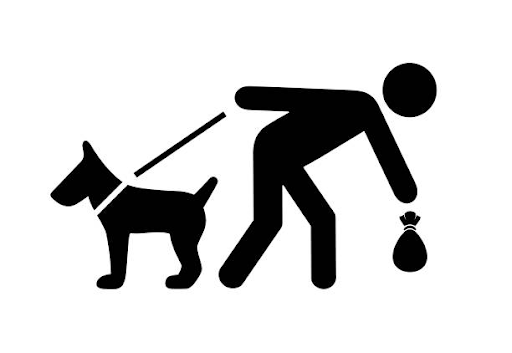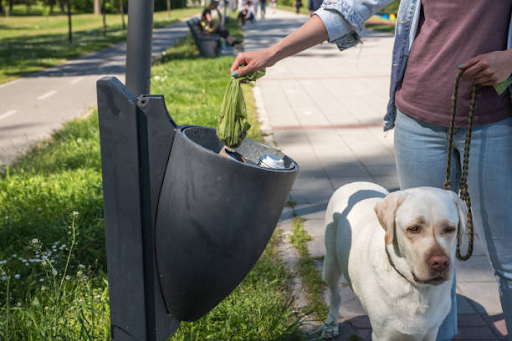Introduction:
Dog waste may seem harmless, but it poses significant risks to public health. The inappropriate disposal of canine excrement can result in the spread of infections and illnesses that are dangerous to people and other animals' health as well as the environment. In order to combat this issue, the use of dog waste containers has proven to be an effective solution. These containers provide a convenient and hygienic way to dispose of dog waste, minimizing the risks of disease spread. In fact, according to recent studies, communities that have implemented dog waste container programs have witnessed a significant decrease in disease transmission rates.
We will discuss the value of dog waste containers in halting the spread of illness, their advantages, and how they promote a healthier community in this blog.
Understanding the Risks of Dog Waste
Dog waste may seem harmless, but it poses serious risks to public health. By understanding these risks, we can address the pinpoints and take appropriate measures to prevent the spread of disease. Disease-causing germs including parasites, bacteria, and viruses can spread to people through dog excrement. These can lead to infections, gastrointestinal issues, and even more severe illnesses. Unattended canine feces increases the risk of disease transmission by contaminating the environment, water supplies, and public areas. To safeguard our communities, it is crucial to educate ourselves about these risks and implement proper waste management practices, including the use of dog waste containers.
A discussion of the ailments that people can contract
When it comes to dog waste, it's essential to address the pinpoints and understand the diseases that can be transmitted to humans. Dog waste contains harmful pathogens that can pose a risk to our health. These include parasites like roundworms and hookworms, bacteria like Salmonella and E. coli, as well as viruses such as parvovirus and coronavirus. These diseases can lead to infections, digestive issues, and even more severe illnesses. By coming in contact with contaminated dog waste, we put ourselves at risk of contracting these diseases. That's why it's crucial to take the necessary precautions, such as proper waste disposal and the use of dog waste containers, to minimize the spread of these harmful pathogens.
Examples of how these diseases can spread in the community
It's important to address the pinpoints and understand how diseases can spread in our communities due to dog waste. Unattended dog feces can grow into a breeding ground for dangerous infections. These pathogens can contaminate soil, water sources, and even surfaces in public spaces. When it rains, for example, the water may wash germs from the trash into the neighboring streams or lakes, contaminating them and endangering people and other animals. Additionally, children playing in parks or people walking their pets can come into direct contact with contaminated areas, increasing the chances of disease transmission. These examples highlight the need for proper waste management to protect public health.

Proper Usage and Maintenance of Dog Waste Containers
To effectively address the pinpoints of disease prevention, it is crucial to understand how to use and maintain dog waste containers correctly. Firstly, always ensure that waste is disposed of in designated containers promptly. Scoop the waste using a plastic bag or scooper and seal it tightly before placing it in the container. This helps to contain the pathogens and prevent their spread. Additionally, it is important to regularly clean and disinfect the containers to maintain hygiene. Use mild detergent or disinfectant and rinse thoroughly. By following these simple steps, you can ensure that dog waste containers are utilized effectively, reducing the risk of disease transmission in your community.
Importance of regular cleaning and maintenance
Regular cleaning and maintenance of dog waste containers play a vital role in addressing the pinpoints of disease prevention. It is essential to understand the importance of keeping these containers clean. Regular cleaning helps eliminate harmful pathogens and reduces the risk of disease transmission. Make it a routine to wash the containers with a light detergent or a disinfectant at least once a week. Thoroughly rinse the containers to ensure they are free from any residue. By prioritizing regular cleaning and maintenance, you can effectively maintain the hygiene and functionality of dog waste containers, safeguarding the health of your community.
Tips for promoting responsible use of dog waste containers
To address the pinpoints of disease prevention effectively, it's crucial to promote the responsible use of dog waste containers. Here are some simple yet effective tips to encourage proper usage:
Awareness: Educate dog owners about the importance of using designated containers and the potential health risks of improper waste disposal.
Accessibility: Ensure that dog waste containers are easily accessible throughout the community, providing convenient options for waste disposal.
Clear Signage: Install clear and visible signs near the containers, reminding dog owners to clean up after their pets and use the provided containers.
Rewards and Incentives: Consider implementing rewards or recognition programs for responsible dog owners who consistently use waste containers.
Community Engagement: Encourage community involvement by organizing clean-up events or initiatives to promote a clean and healthy environment.
By implementing these tips, we can promote the responsible use of dog waste containers, effectively minimizing the spread of diseases and ensuring a safer community for all.

Community Initiatives and Policies
In the quest to prevent the spread of diseases caused by dog waste, community initiatives, and policies play a crucial role. These collective efforts help address the pinpoints in waste management and promote a healthier environment for everyone.
By implementing dog waste container programs, communities can encourage responsible dog ownership and ensure proper waste disposal. These initiatives educate residents about the risks associated with improper waste management and emphasize the importance of using designated containers.
In addition, policies and regulations related to dog waste management provide a framework for maintaining cleanliness and public health. They establish guidelines for the installation and maintenance of dog waste containers, making it easier for individuals to comply with responsible waste disposal practices.
Through community initiatives and policies, we can create a culture of awareness, responsibility, and cooperation, reducing the transmission of diseases caused by dog waste.
Conclusion
In conclusion, dog waste containers play a crucial role in preventing the spread of disease and safeguarding public health. By addressing the pinpoints of proper waste management, these containers provide a practical solution to a significant environmental and health concern. With their ability to contain and control dog waste, they effectively reduce the risk of disease transmission to humans and other animals. Communities that implement dog waste container programs demonstrate their commitment to public safety. It is essential for individuals and communities to prioritize responsible dog ownership practices and promote awareness about the importance of using these containers. By doing so, we can create cleaner, healthier environments and minimize the potential health risks associated with improper waste disposal.
Frequently Asked Questions (FAQ)
A: Dog waste containers provide a dedicated and hygienic space for disposing of dog waste. By properly containing and sealing the waste, these containers prevent the spread of disease-causing pathogens present in dog waste. This reduces the risk of contamination and transmission to humans and other animals.
A: Using dog waste containers offers several benefits. First and foremost, they keep public areas tidy and free of offensive and filthy rubbish. Secondly, they minimize the risk of disease transmission, promoting public health and safety. Additionally, these containers help in responsible waste management and contribute to maintaining a healthier environment for everyone.
A: It is recommended to clean dog waste containers regularly, ideally on a weekly basis. Cleaning involves emptying the container, disinfecting it with pet-safe cleaning solutions, and replacing the waste bag or liner. Regular cleaning helps maintain hygiene, prevents odors, and ensures the continued effectiveness of the container in preventing disease spread.
A: Yes, there are various types of dog waste containers to choose from. Some common options include in-ground waste containers, wall-mounted units, and freestanding containers with bag dispensers. Each type has its own features and advantages, allowing dog owners and communities to select the one that best suits their needs and preferences.
A: Communities can promote the responsible use of dog waste containers by raising awareness through educational campaigns. This can include distributing informational pamphlets, hosting community events, and utilizing social media platforms to spread the message. It is also important to provide an adequate number of conveniently located containers and regularly maintains them to encourage their proper use by dog owners. By fostering a culture of responsible dog ownership, communities can effectively prevent the spread of disease through proper waste management.



